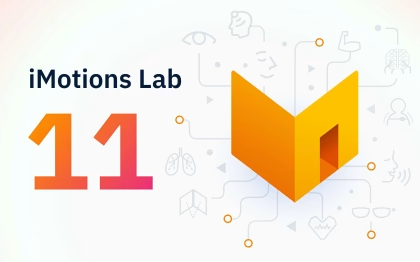“Unconscious”, “subconscious”, or “non-conscious” are distinct psychological terms with specific meanings in the realm of science. Understanding the nuances between these terms is crucial for accurately conveying psychological concepts and processes. By employing these terms correctly, one can effectively communicate complex ideas related to cognition and behavior.
Table of Contents
- Whats the difference between Unconscious, Non-Conscious, and Subconscious?
- The Unconscious: Latent Content with Potential for Awareness
- The Non-Conscious: Automatic, Inaccessible, and Foundational
- The Subconscious: A Vague Popular Term, Largely Abandoned by Science
- Unconscious, Non-Conscious, or Subconscious Table
- Why These Distinctions Matter
- Conclusion
- Free 52-page Human Behavior Guide
Whats the difference between Unconscious, Non-Conscious, and Subconscious?
It’s easy to throw around terms like “unconscious desire” or “subconscious fear” in everyday conversation. But in the scientific study of human behavior, the distinctions between unconscious, non-conscious, and subconscious matter-a lot. These terms describe different types of mental activity that occur outside of conscious awareness, each with unique mechanisms, implications, and research methods.
Let’s unpack what modern psychology and neuroscience really mean by these labels-and why getting them right is essential for accurate behavioral research.
The Unconscious: Latent Content with Potential for Awareness
In contemporary psychological science, the term unconscious refers to mental content that is not currently part of our conscious experience, yet can be accessed under the right circumstances. This includes suppressed memories, implicit motives, and subliminal stimuli that can influence decisions, emotions, or perceptions.

Historically rooted in psychoanalysis, the unconscious was thought to hold repressed material-content kept out of awareness due to conflict or threat. In modern experimental contexts, we study the unconscious through paradigms like priming, in which brief, unperceived stimuli influence behavior, or through brain imaging that detects activation patterns in response to emotionally relevant cues outside of awareness.
- Key Point: The unconscious is not permanently sealed off. It’s temporarily inaccessible but has the potential to become conscious through introspection, therapy, or increased stimulus strength.
The Non-Conscious: Automatic, Inaccessible, and Foundational
The non-conscious refers to processes that are-and will always be-outside of conscious experience. These include perceptual integration, autonomic regulation, and motor preparation systems that function without awareness and cannot be introspectively accessed.
You don’t experience your brain stitching together your visual field, adjusting your heart rate to threat, or preparing a movement before you consciously decide to act-but all of these are non-conscious operations. They are structurally hidden from consciousness, not simply overlooked.
This domain is often studied via neuroimaging, reaction time experiments, and neurological conditions like blindsight, where patients can respond to visual information without consciously seeing it.
- Key Point: Non-conscious processes are permanently outside awareness. They shape perception and action in real time without ever entering conscious thought.
The Subconscious: A Vague Popular Term, Largely Abandoned by Science
While widely used in self-help books and everyday language, the term subconscious has little traction in scientific discourse. It originally referred to content just below the threshold of consciousness-a kind of mental waiting room. However, its lack of precision led Freud and later researchers to abandon it in favor of clearer constructs.

Today, phenomena often called “subconscious” are better categorized as pre-conscious (readily accessible but not currently in awareness) or implicit (learned patterns that guide behavior without deliberate thought). For example, recalling a familiar phone number or automatically responding to a facial expression fits more accurately into these scientifically recognized frameworks.
- Key Point: “Subconscious” is imprecise. Science prefers terms like pre-conscious or implicit, depending on whether the content is retrievable or automatic.
Read our blog on: The Subconscious Mind
Unconscious, Non-Conscious, or Subconscious Table
Unconscious Information Table
| Scientific focus | Representations or computations that could, in principle, surface in awareness but are below threshold right now. Historically tied to repression in psychoanalysis; in cognitive neuroscience it refers to subliminal or primed processing that still shapes behaviour. |
| Can its contents ever become conscious? | Yes-with time, attention, therapy, or stronger neural activation. |
| Typical examples | Repressed memories, implicit biases, subliminal priming that alters choice, masked‐word Stroop effects. |
| Typical methods that reveal it | Free association & dream analysis (clinical); masked-prime tasks, conflict-adaptation paradigms, ERP/fMRI signatures (experimental) (health.harvard.edu) (frontiersin.org) |
Non-Conscious Information Table
| Scientific focus | Neural information-processing that never reaches the global workspace that supports phenomenal awareness; it is part of the brain’s “back-office”. |
| Can its contents ever become conscious? | No-by definition it stays outside awareness, though its outputs can feed conscious systems. |
| Typical examples | Retinal edge detection, autonomic regulation, motor readiness potentials that start before we feel the “urge” to act, large-scale predictive coding that silently builds the “personal narrative”. |
| Typical methods that reveal it | Single-cell or population recordings, readiness-potential (Libet-style) EEG, blindsight and visual-neglect studies, computational modelling of “access” networks (frontiersin.org) |
Subconscious Information Table
| Scientific focus | A loosely defined “middle layer” lying just under awareness-roughly what Freud later called pre-conscious. It is rarely used in peer-reviewed work because it is hard to operationalise. |
| Can its contents ever become conscious? | Often yes-it is assumed to be accessible with a nudge (e.g., when you suddenly remember a phone number). |
| Typical examples | Tip-of-the-tongue facts, automatic skills you can verbalize once attention is drawn, ideas that emerge in hypnosis or guided imagery. |
| Typical methods that reveal it | Self-report, hypnosis paradigms, everyday introspection. Modern researchers usually re-label these cases as pre-conscious or implicit rather than “subconscious”. (health.harvard.edu) |
Why These Distinctions Matter
Using accurate terminology isn’t academic nitpicking-it shapes how we understand, measure, and intervene in human behavior. Mislabeling a process as “unconscious” when it’s actually implicit can lead to flawed experiments or misinterpreted data. In domains like clinical diagnostics, behavioral economics, or neuromarketing, precision in describing mental processes ensures that we target the right mechanisms.
Each term-unconscious, non-conscious, and subconscious-maps onto distinct functional systems with different rules, research methods, and theoretical implications.
Conclusion
The human mind is vast, and consciousness is just the tip of the iceberg. Beneath it lie multiple layers-some reachable, others not. By using precise terms, we can better study how emotions form, how decisions unfold, and how behavior emerges before we’re even aware of it.
So the next time someone refers to a “subconscious desire” or “unconscious bias,” you’ll know exactly what to ask: Is it hidden, unreachable, or just not yet in the spotlight?
The answer is, in short:
- Unconscious = hidden but accessible
- Non-conscious = inaccessible by design
- Subconscious = outdated or imprecise
Free 52-page Human Behavior Guide
For Beginners and Intermediates
- Get accessible and comprehensive walkthrough
- Valuable human behavior research insight
- Learn how to take your research to the next level












